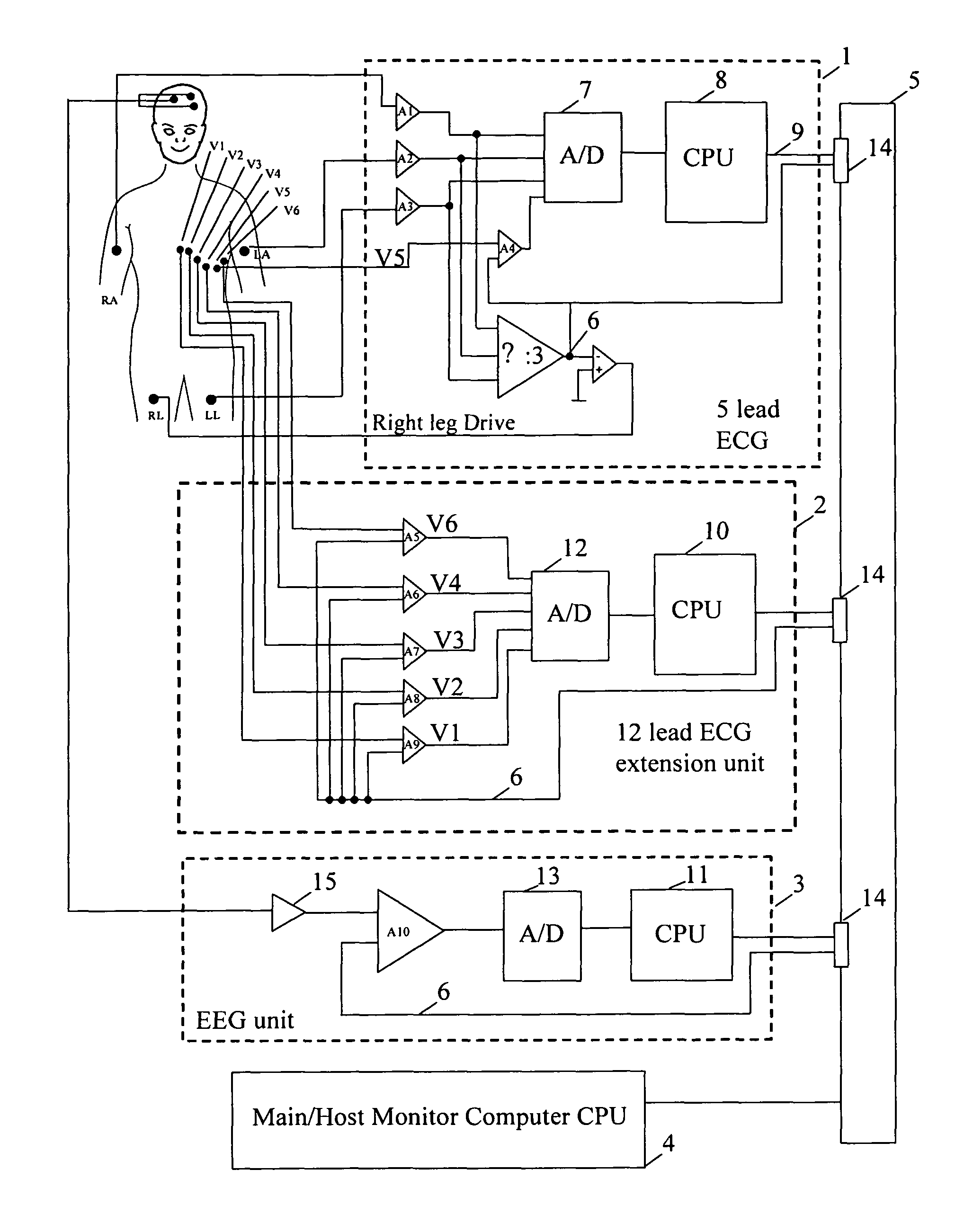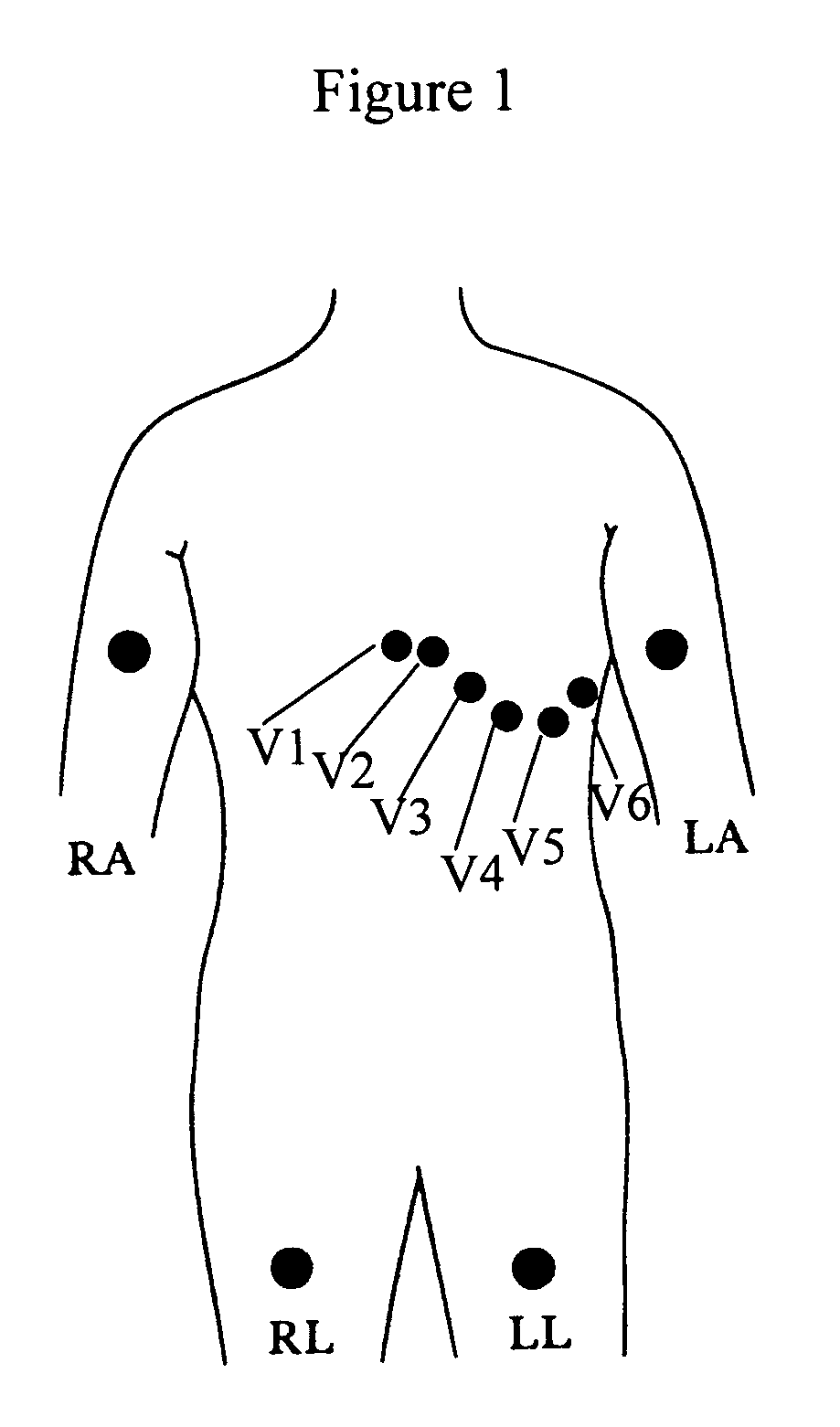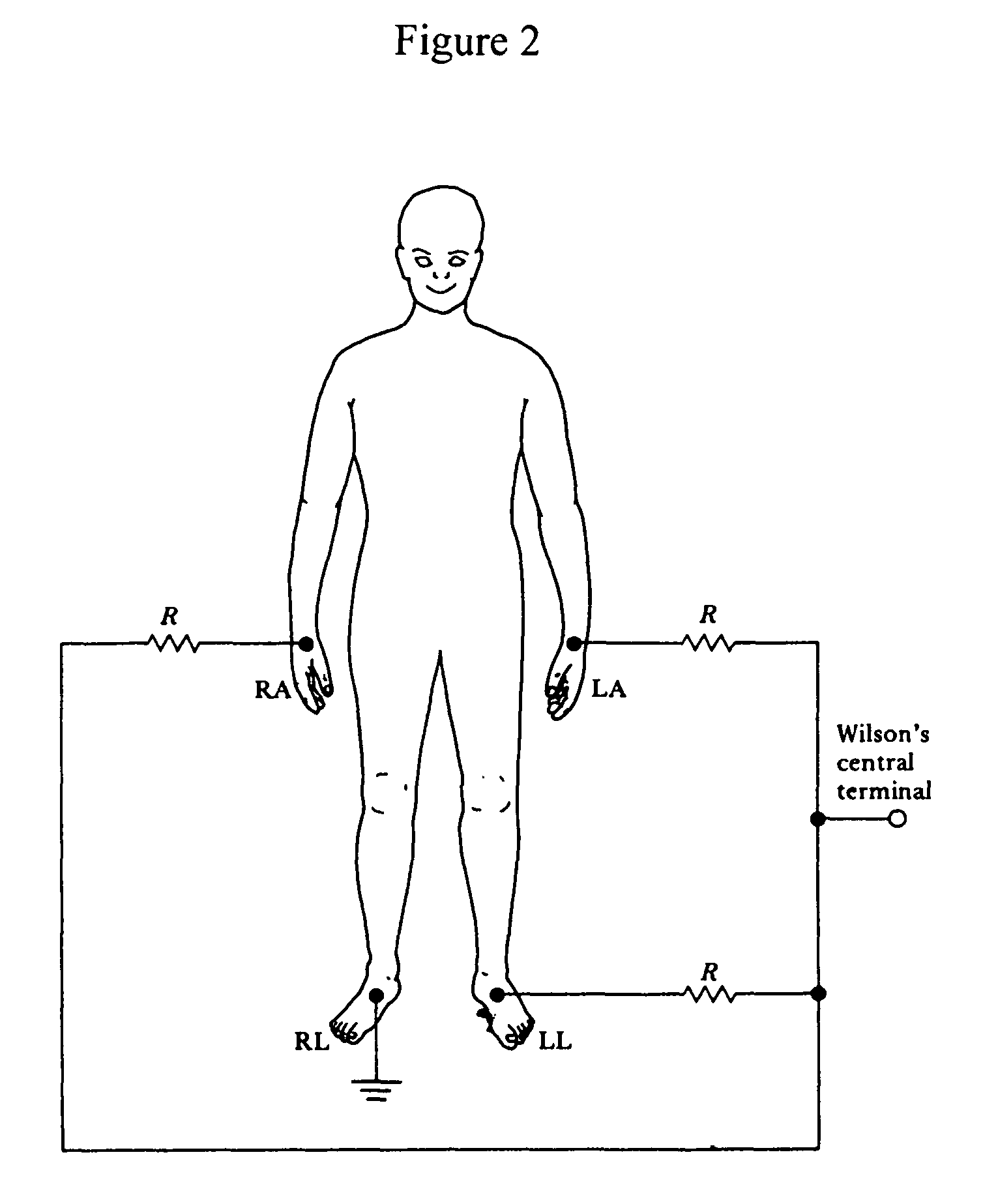Floating physiological data acquisition system with expandable ECG and EEG
a physiological data and data acquisition technology, applied in the field of modulear data acquisition systems, can solve the problems of time-consuming and difficult change of electrode sets, affecting the reliability of medical staff, and burdening nursing staff to bring a separate eeg device, so as to avoid high frequency reflection, improve reliability, and reduce noise
- Summary
- Abstract
- Description
- Claims
- Application Information
AI Technical Summary
Benefits of technology
Problems solved by technology
Method used
Image
Examples
Embodiment Construction
Reference will now be made in detail to the embodiments of the present invention, examples of which are illustrated in the accompanying drawings.
The floating ECG measurement system according to the present invention is illustrated in FIG. 3. A 5 lead ECG measurement unit 1 measures the ECG signal from electrodes RA, LA and LL. Augmented leads aVR, aVL and aVF (not shown in FIG. 3) are calculated by comparing the measured voltage from each of the limb electrodes to a reference voltage (the average of the other two electrodes), and the one precordial lead e.g. V5 is comprised by comparing and amplifying the signal measured from that electrode to a common potential i.e. Wilson's terminal in amplifier A4. Wilson's terminal 6 is the calculated average voltage of the three limb leads VR, VL, and VF (i.e. average potential of RA, LA, and LL) The measured ECG signal is amplified by preamplifiers or the front end amplifiers A1-A4 and it is converted into a digital ECG signal by A / D converter...
PUM
 Login to View More
Login to View More Abstract
Description
Claims
Application Information
 Login to View More
Login to View More - R&D
- Intellectual Property
- Life Sciences
- Materials
- Tech Scout
- Unparalleled Data Quality
- Higher Quality Content
- 60% Fewer Hallucinations
Browse by: Latest US Patents, China's latest patents, Technical Efficacy Thesaurus, Application Domain, Technology Topic, Popular Technical Reports.
© 2025 PatSnap. All rights reserved.Legal|Privacy policy|Modern Slavery Act Transparency Statement|Sitemap|About US| Contact US: help@patsnap.com



